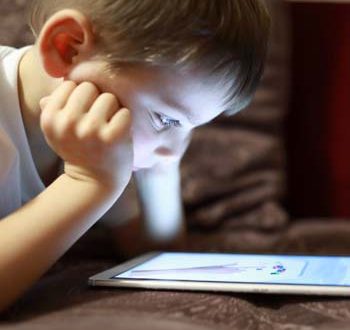
Managing screentime can be a real challenge, particularly at a time when we are being asked to spend more time at home. Our blog this week offers some tips on helping kids to create a balance when it comes to screens.
The reality is that in this digital age screens are everywhere. Children could potentially be spending time looking at a screen from the time they wake up every morning until they go to bed. Not that anyone would condone that approach! What can we do to help children better manage their use of screens and create a balance in the use of technology?
Use the Zeeko 5:1 Rule: The 5:1 Rule is one that we have pioneered at Zeeko as a very effective way of helping children to achieve a balance in their use of screens. For every one hour spent using a screen this should be balanced with 5 hours of real-world activity. This means activities that don’t involve screens. These could include being involved in a sporting activity or playing with friends. A useful tip for parents is to create an offline activity jar. Fill a jar with lollipop sticks with your child’s favorite offline activities written on them, such as ‘DIY crafts’ or ‘bike riding’. It can be difficult for children to come up with ideas to have to do 5 hours of activities. So, it’s good for parents to help out with some ideas! Once your child has had their hour on screentime, they go to the jar and pick out a lollipop stick and that’s the next activity that they will do.
Start with small steps: At Zeeko we strongly believe that confiscation of digital devices, banning the use of screens or removing screens as a punishment is counterproductive. By ‘banning’ the use of screens it’s likely your child will develop a resentment of you and may take every opportunity to be on screens when you are not around. It is far more effective to sit down together and have an open conversation about the use of screens by everyone in the family. A good way to start to create a healthy balance regarding screens would be to decide that for one day every weekend you all do a family activity that does not involve a screen. This is a small first step towards creating a healthier balance and is manageable and won’t be too overwhelming.
Encourage and promote no screens for at least an hour before bedtime: Screens omit a blue light which effects the melatonin levels in our brains, effectively meaning that screens stimulate our brains. Obviously, this is not a good idea in promoting a restful night’s sleep particularly for children, but adults too. Sleep is crucial to allow children to effectively concentrate, learn and grow. The American Academy of Paediatrics recommends that for at least one hour before bedtime there should be no screens. Our bodies and minds become used to the routine around bedtime and screens should not be part of this, especially if we want our family to have a good night’s sleep. One strategy to help with a more restful sleep is to invest in a traditional alarm clock as opposed to using the clock on your phone as an alarm. Try leaving your phone downstairs and using the alarm clock instead for a few nights and see what difference it makes to the quality of your sleep!
Make sure to include ‘non screen activities’ every day: This may sound obvious but with the busy lives that families have, particularly during the school year, it can be difficult to remember to include activities that don’t involve looking at a screen! After school activities such as sports, or for older children, meeting with their friends face to face rather than communicating online, is something that should be encouraged. One great way to start this would be to make sure that when you all sit down to have dinner that there are no screens or devices allowed for that period of time.
Be a good role model: This can be a genuine challenge when it comes to the use of screens. Essentially if your child sees you constantly looking at a screen. they are going to see this behaviour as normal and acceptable, even for them. Try where possible to have a balance in your own use of screens. Parents often find it helpful to put their phones on flight mode which can be less distracting. Also try to ensure that you spend quality screen free time with your child on a very regular basis.
Realistically, technology now surrounds us all. There is even a relatively new concept known by the acronym F.O.M.O. – Fear of Missing Out, linked to the viewing and posting of content online via social media apps. Looking at this from an alternative perspective it could be said that children and teens are also missing out on a childhood free from the pressures associated with the omnipresence of technology. When we meet parents at our seminars in schools we regularly hear about the ongoing challenge parents face in trying to create a balance with the use of technology.

